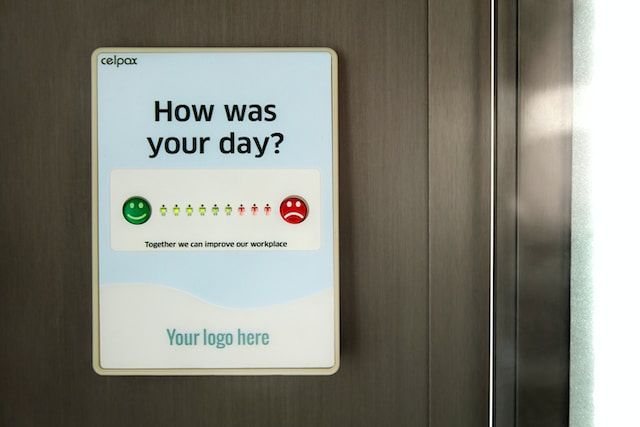‘OMG, Why Aren’t They Seeing What I See?!’

Look at that image. Do you see horizontal lines that are straight or lines that are sloping?
In all the years that I’ve been in leadership roles in Europe, the United States and Asia, it’s never failed to amaze me how people can look at exactly the same reality and come to totally different conclusions.
A few years ago, I was teaching at an IMD leadership programme in Europe where I shared some of my life experiences at General Electric. I could not believe the reaction to the same sharing.
The Asian participants took as a given that great organisations push and “force” employees through tough challenges and experiences; some Western Europeans were flabbergasted and upset – how dare a company push an employee so hard; others from the US and Britain, found it refreshing to learn how development works. Same sharing but completely different interpretations of its meaning.
When it comes to leadership, a critical quality for a leader to possess is the ability to agree to concessions when needed: to build trust and rapport by finding common ground through appreciating – and understanding – different perspectives to their own.
No doubt most of us would have experienced a stand-off, where we’re absolutely sure of the best course of action to take, or how a particular account unfolded; fighting the opposite corner is a colleague whose views are rigidly set against our own and, usually, what transpires is that each side digs their heels in further, refusing to give an inch.
In the meantime, the progress of our common goals is held back as we forget about the bigger picture and focus hard on our own little corner. Who does this help? What purpose does it serve when we listen to reply rather than to understand?
Is there any benefit – other than a temporary ego boost – in trying to ‘save face’, particularly when we’re not really sure if our way is any better than suggestions coming from the other side?
To answer the question at the start of this post, the horizontal lines are perfectly straight; but because the stacked black and while boxes aren’t aligned, the image fools our brains into seeing lines that slope or bend, depending on our perspective.
Nevertheless, I imagine there are plenty of people who would argue otherwise, so sure they are that their perspective is the right perspective.
When we think about what it means to communicate, it’s often the case that talking or delivering a message immediately springs to mind. But to communicate effectively means that we listen to hear; hear to understand; and understand to learn what the other person is trying to tell us and why.
Communication is about responding rather than reacting and about giving others their space to express themselves in a way that allows them to be heard and respected.
Effective communication doesn’t mean that we should give in to other ideas that are objectively not the best way forward, but it does mean that we should give those ideas the opportunity to be heard.
This is what great leaders do: they know we have two ears and one mouth for a reason, and they realise that people understand only when they feel understood, and are ready to accept ideas from those who have first made an effort to accept their position and where they are coming from.
Several years ago, while facilitating a difficult board that had issues making decisions and was stalling the progress of the organisation, I quickly came to the conclusion that no one was actually listening to each other.
As each person was listening ‘briefly’ only to counter and then state their own beliefs, there was no progress made. To circumvent this issue, we had to go back to basics and teach senior board members how to really listen and yet assert their points of view.
The conclusion – everyone essentially were saying the same thing and wanted to go the same direction. Everyone was using different terms and words, but essential meant the same thing, but as no one was really listening, no progress was made. Once they listened, everyone became great friends and it was easy to make decisions.
The pain of listening
So, how do we start the process of being a better listener? It starts with being fully present. Sounds easy enough but it is actually the hardest thing in the world. Our attention span is worse than a goldfish, approximately eight seconds only, so having to listen to someone, can be a tiring task. And, our mind loves to wonder.
And in this world of digital distractions and incredible information overload, listening is a painful process no one truly enjoys. Yet, if truly listen to someone, it can make all the difference in the world to that person. Some research go as far as to suggests that your brain sometimes can’t tell the difference between being loved and being listened to intently. So, if you are leader who needs someone to go out there and do something for you, you are more likely to get them to buy in and do it if they feel listened to.
You will love this: To Be A Better Leader, Listen With ‘Ting’
Wait, it gets worse. According to a study by Ralph Nichols, a professor at the University of Minnesota, the older we grow, the worse our listening becomes. Kids are actually better listeners than adults.
Why? Our human brain has the capacity to digest up to 400 words per minute. But even the fastest speakers (like me) can only speak about 125 words per minute. That means more than two-third of our brain is idle. Children, with their less developed brain, don’t have to contend with this issue as much. So, what can we do?
A few years ago, I was confronted by this issue. I got feedback that I needed to improve my listening skills from my employees.
During a conversation with my close friend and former hostage negotiator George Kolhrieser, he shared that the best way to really listen is to limit your sentences to a max of four sentences and ending your fourth sentence with a question. Kolhrieser reasoned that if we use too many sentences, it is hard for people to listen.
Likewise, great dialogue can only happen when both people speak rather than one person’s long monologue. This form of dialogue enabled focus and also ensured key objectives to be met.

Do you listen to understand, or do you listen to reply?
To test your listening skills, why not try listening to this podcast?
Final thoughts
We need to open ourselves up more to different views and perspectives. It’s a great way to give progress a helping hand, and it’s the best way to ensure those who help us most along the way feel respected, valued, motivated and empowered. And the best way to do that is to listen and have meaningful conversations.
The further we dig our heels in, the bigger the hole we create for ourselves and others. Of all the challenges that are facing business leaders and senior managers today, perhaps one of the biggest is to realise that we ourselves still have a lot of learning to do, and that lessons can often come from the unlikeliest of places.
Connect with Roshan on Twitter and on Facebook for more insights into business, personal development, and leadership. For more Be A Leader articles, click here.
Article first published on LinkedIn.
Leadership
Tags: Be A Leader, Alignment & Clarity, Organisational Challenges
Roshan is the Founder and “Kuli” of the Leaderonomics Group of companies. He believes that everyone can be a leader and "make a dent in the universe," in their own special ways. He is featured on TV, radio and numerous publications sharing the Science of Building Leaders and on leadership development. Follow him at www.roshanthiran.com







